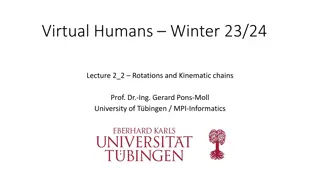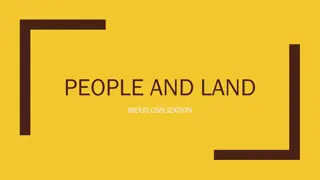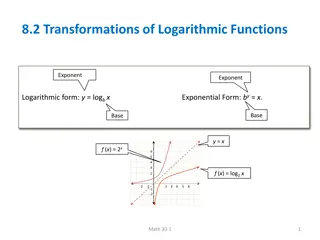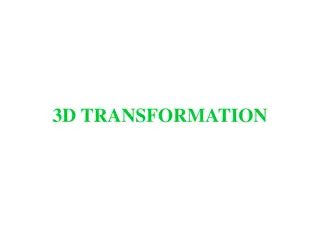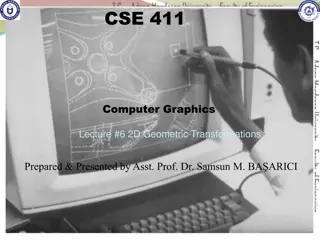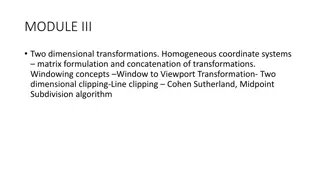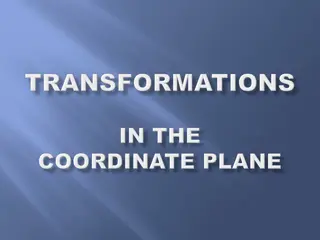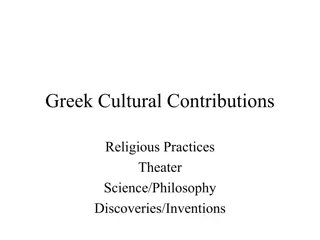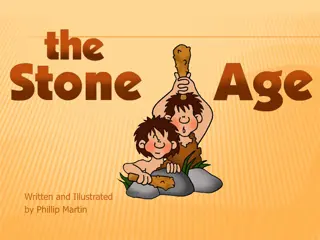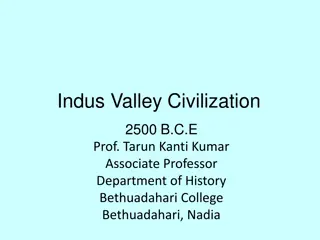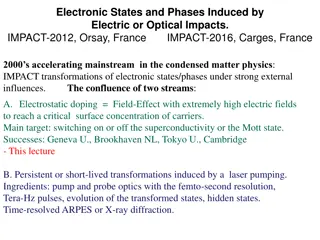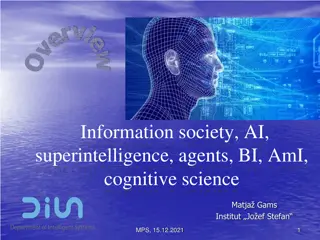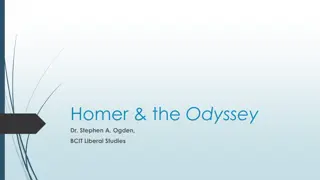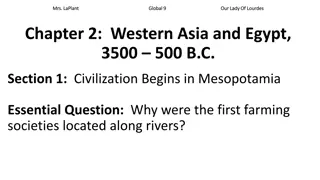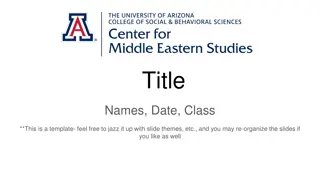Early Human Civilization: Technological and Cultural Transformations
The transition from the Neolithic Revolution to the Bronze Age marked significant advancements in agriculture, metalworking, trade, and governance. The Neolithic Revolution brought about permanent settlements and agricultural farming, while the Bronze Age introduced widespread use of bronze and economic interactions. Hammurabi's Code, one of the earliest recorded sets of laws, established governance standards. These developments shaped early human civilization and laid the foundation for modern societies.
Download Presentation

Please find below an Image/Link to download the presentation.
The content on the website is provided AS IS for your information and personal use only. It may not be sold, licensed, or shared on other websites without obtaining consent from the author.If you encounter any issues during the download, it is possible that the publisher has removed the file from their server.
You are allowed to download the files provided on this website for personal or commercial use, subject to the condition that they are used lawfully. All files are the property of their respective owners.
The content on the website is provided AS IS for your information and personal use only. It may not be sold, licensed, or shared on other websites without obtaining consent from the author.
E N D
Presentation Transcript
AP World 8000 BCE 600 BCE Technological and Environmental Transformations Jake Walsh,Sean Dickenson, Gabriella Farneti, Riley Veazey
Neolithic Revolution 10,000 BCE The Neolithic revolution is a revolution of agriculture in the domestication of plants and animals, of permanent settlement, and agricultural farming. The Neolithic revolution brought kingdoms and towns because of the fact of permanent settlement. But this permanent settlement was mostly because of the large food surplus towns and villages were now having. Before having to search miles and miles to find food, now they were just growing it and led to where we are today as a post industrialized world. This relates to multiple AP World Themes but mostly to AP World Theme #1 Interaction between humans and the environment because of the patterns of technology and settlement in the world at this time. Major settlements were created because of the technology of farming and building secure structures. It also relates to AP World Theme #4 Creation, expansion, and interaction of economic systems because this revolution brought agricultural production in the form of a huge food surplus. This food surplus brought settlement and made populations to get bigger to make new technologies and for more revolution to emerge and the starting of the world we know today.
Bronze Age 3000 BCE The Bronze Age gets its name because of the new abundant weage of bronze, in many regions. It was a period of extensive use of metal and developing trade world wide. According to findings by modern archaeologists, evidence has been discovered about the culture in Mesopotamia and Egypt developed the earliest writing systems. The bronze age relates to multiple AP World Themes. One of the AP World Themes that it applies too is #4 Creation, expansion, and interaction of economic systems, because of the fact it brought economies and countries together to share their ideas and goods that they had. This brought industrialization in a bronze perspective by making more advanced and goods which brought trading to life. Another theme that it applies too is AP World Theme number #1interaction between humans and the environments because by the development and the new technologies the bronze age brought the more stable and permanent settlement there was. Lastly this applies to AP World Theme #2 Development and interaction of cultures, because by trading and the spreading of weapons and ideas cultures interacted and changed forever because of all the advances and the fact that arts with literature were being invented in all these ideas.
Hammurabis Code 18th CBCE Hammurabi s code was created by the 6th Century Babylonian King, Hammurabi. The code contains 282 laws with scaled punishments. Many of the punishments severity dependent on social status. Nearly half of the code dealt with matters of contract. Other provisions were laws concerning transaction (Example: liability of a builder for a house that collapses). One third of the code dealt with issues concerning household issues. Discovered in 1901, by modern archaeologists, it is the oldest deciphered writing in the world. This was a major political development, one for the oldest recorded pieces of laws. This applies multiple AP World Theme and mostly too #3 State-building and forms of government, because this is one of the first ever written laws in government. This set a standard on how kingdoms, empires, and civilizations should be run with a set of codes and laws which kept everything in place. It shows political structures and forms of governance. Because of the time period this also applies to AP Theme #1 Interaction between humans and the environment because this code of laws showed that the Babylonian kingdom is settled and because all of the advancements that had already happened led to the fact these laws were set in stone because of the settlement they have built over the years.
Shang Dynasty 1600 BCE - 1046 BCE The Shang Dynasty made many cultural advances. They industrialized bronze castings. This was due to advances in technology at the time. The Shang Dynasty was also the first dynasty of China that created their own stable government. The Shang Dynasty relates to multiple AP World Themes. It relates to AP World Theme 1, Interaction between humans and the environment, and AP World Theme 3, State-building and forms of government. This is due to the technological advances that lead to the progressions in bronze castings at this time. Lastly, this relates to AP World Theme 3 because the Shang Dynasty was the first Dynasty of China that created a stable government.
Iron Age 1300 BCE The Iron Age is a period in the prehistory of the Old World, when iron became the dominant tool- making material. Iron had not become popular until the widespread ability to smelt iron ore ( removing impurities and to regulate carbon). The Iron Age brought new weapons like crossbows and better iron swords. By smelting products swords and weapons got deadlier and houses and other settlements got stronger. It was the end of the stone-bronze age because there was only a bright future ahead because of what Iron could do. Iron also led for people to trade more and explore for more iron and other sources which would make swords and weapons and civilization even better. The Iron Age applies to multiple themes the first being AP Word theme #1 Interaction between humans and the environment because of the fact iron from Mother Nature changed the path of the world. This brought new technologies and more advanced technologies to the world which enhanced life and civilization and settlement was even more permanent. This also applies to AP World Theme #2 Development and interaction of cultures, because of the fact that all of these bright ideas and advancements were passed from culture to culture and all the philosophies. Also the fact that architecture changed with iron now being the base to some important buildings and the art of the building being decorated in Iron.
Summary: We started our time period with the Neolithic Revolution and ended it with the Iron age. This is because the Neolithic Revolution was about the domestication of plants and animals and the iron age was about the progressions in technology and the use of metal. Throughout our time period there were many different changes in technology. Our timeline of events pinpoints the different aspects in which America grew technologically and the advances that were made. The new advances not only aided people, but also allowed them to live completely different life styles. They now had access to new food, new ways to build, and protect themselves. Without all of the little discoveries they made then we would not be where we are today. Humans would still live in caves, risking their lives hunting, and gathering food to survive.


